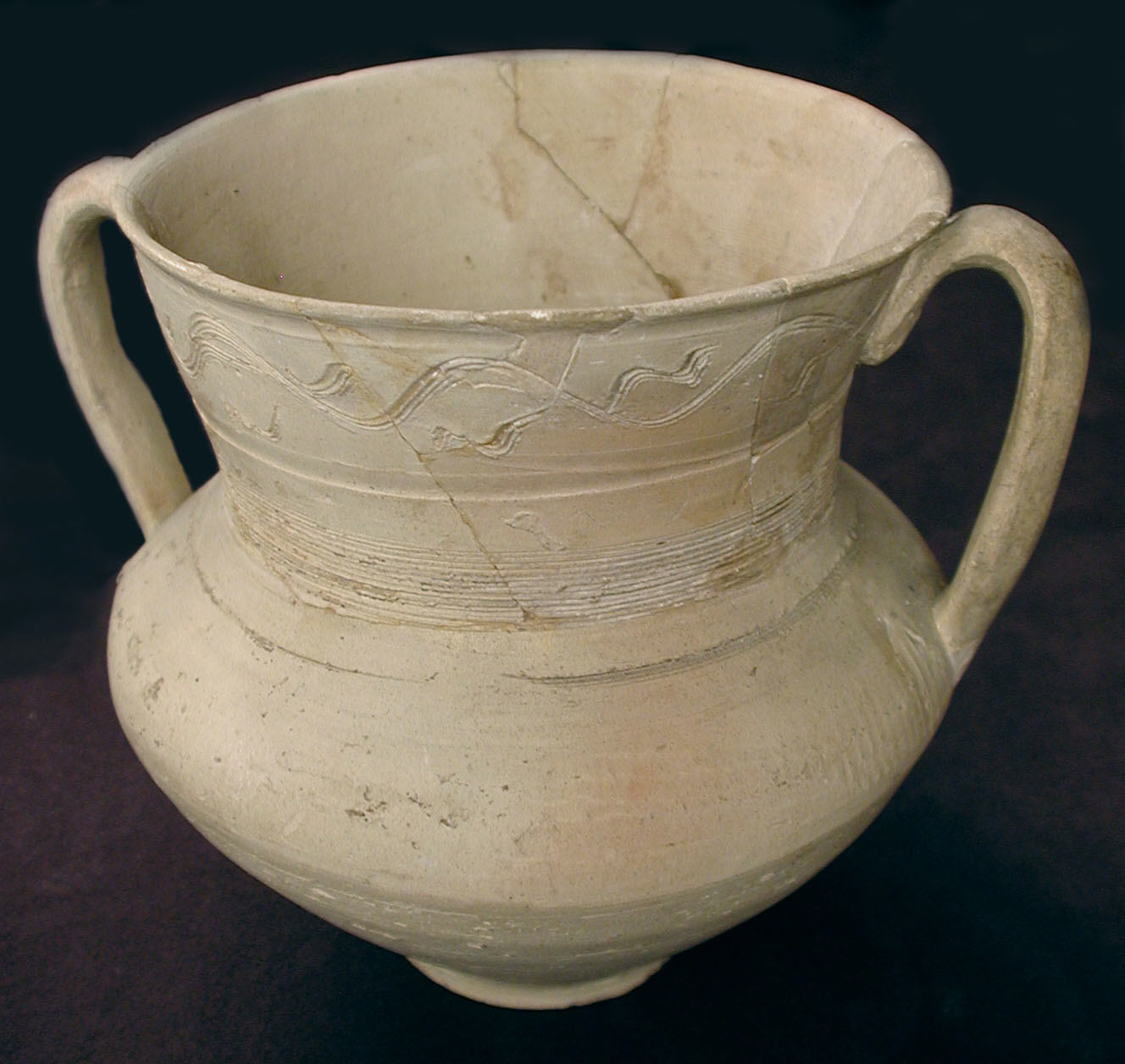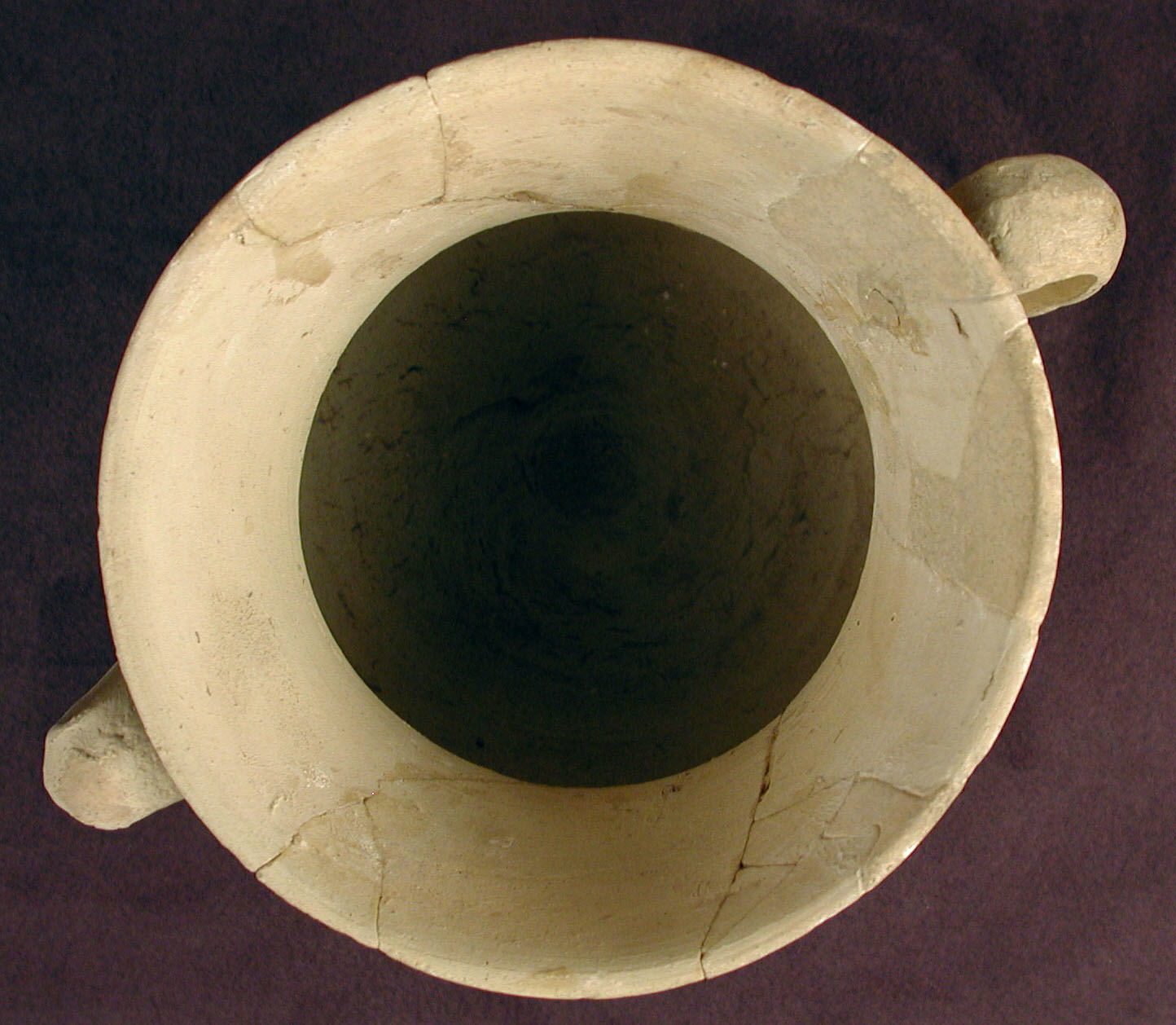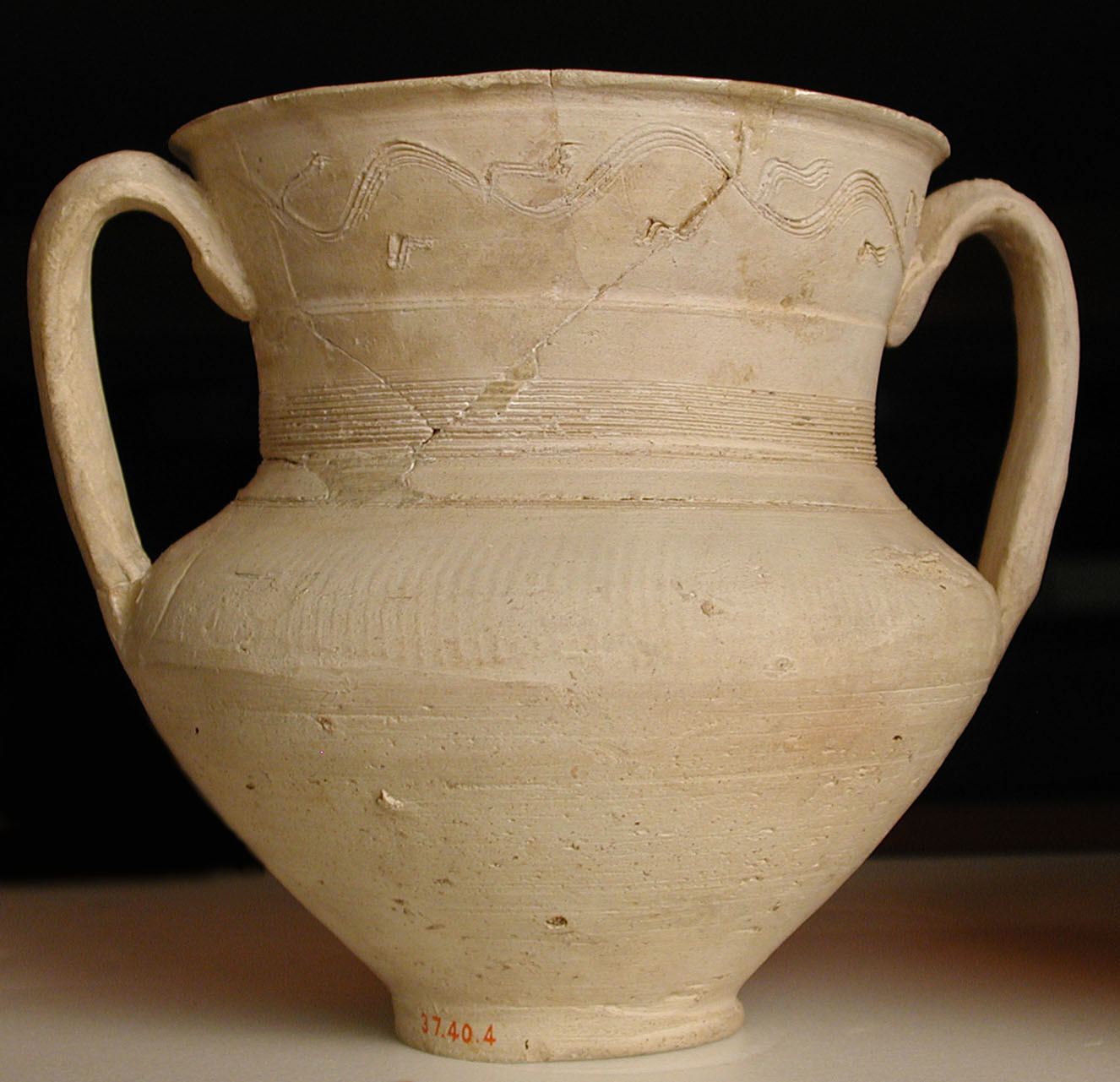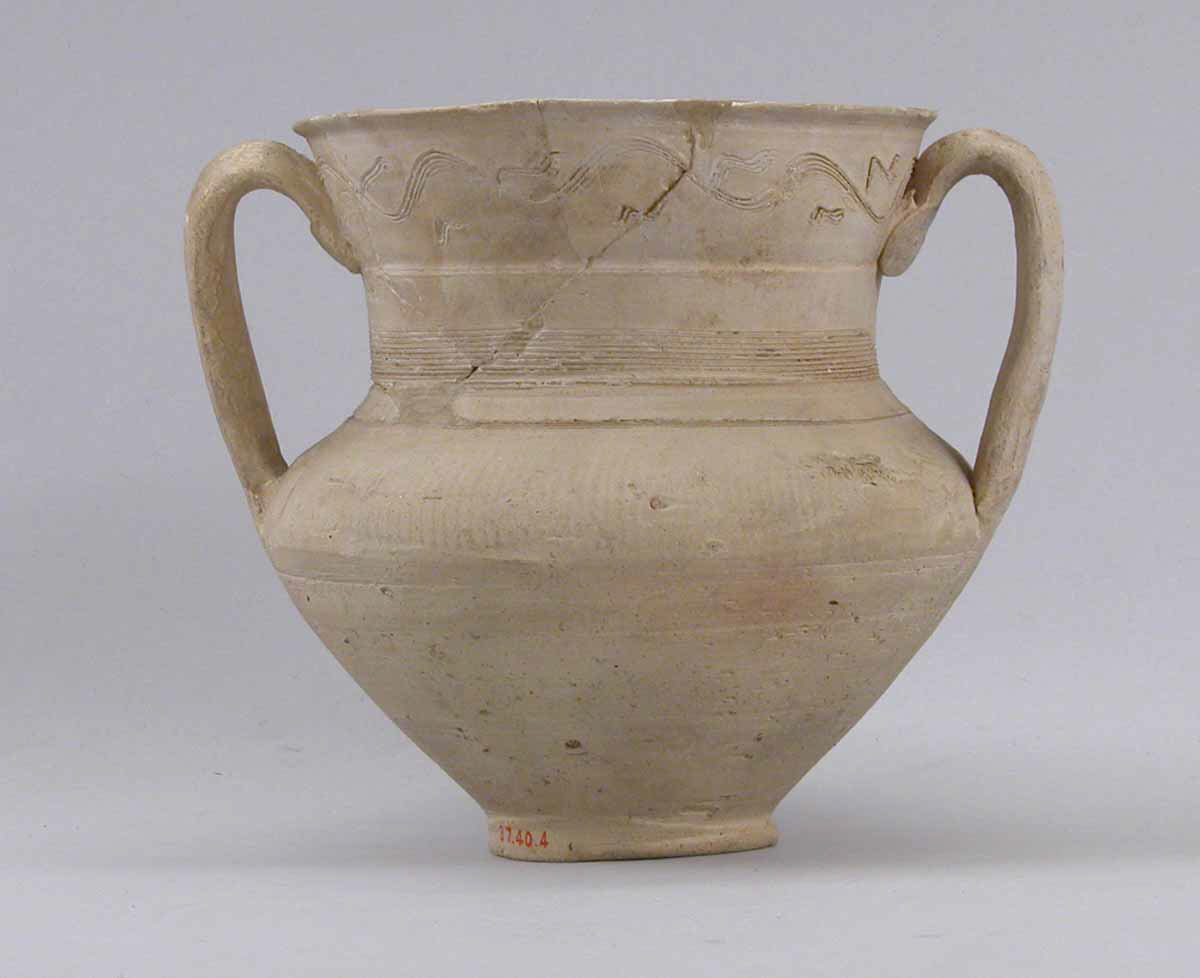Ewer
Not on view
The Metropolitan Museum’s excavations at Nishapur in eastern Iran unearthed large amounts of earthenware pottery, showing the variety of decorative techniques and shapes employed at the site during its long period of inhabitation. Unglazed wares like this ewer made up a large portion of the finds, as is usually the case in archaeological excavations. Such vessels, costing less time and money to produce, served primarily utilitarian purposes and were a common feature in every household. At Nishapur, unglazed vessels were used above all for the transportation, storage and drinking of potable water, which was brought into town from the nearby foothills via underground channels called qanats.
The form of this piece closely reflects its function as a drinking vessel. Its wide, flaring mouth and porous body fabric allow water to stay cool by evaporation and its large, ear-like handles make lifting and tipping easy. Even the simple decoration near its lip – a wave-like line incised into the clay – readily brings the vessel’s intended liquid contents to mind.
Due to rights restrictions, this image cannot be enlarged, viewed at full screen, or downloaded.
This artwork is meant to be viewed from right to left. Scroll left to view more.






